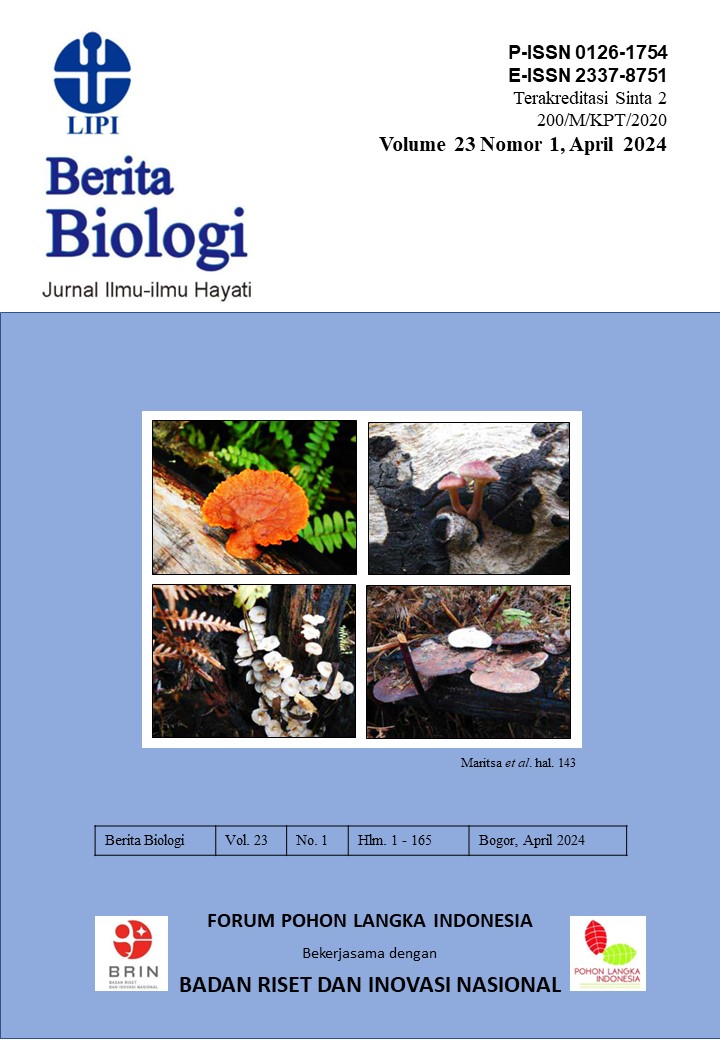ISOLATION AND IDENTIFICATION OF APIGENIN, A FLAVONOID COMPOUND FROM MACARANGA HYPOLEUCA (REICHB.F. & ZOLL.)
DOI:
https://doi.org/10.55981/beritabiologi.2024.3242Keywords:
Macaranga hypoleuca (Reichb.f. & Zoll.), flavonoid, flavone, apigeninAbstract
The study on Macarang hypolueca (Reichb.f. & Zoll.), which was collected from secondary forests around Samarinda City, East Kalimantan, involved phytochemical investigations that led to the isolation of a flavone type compound of flavonoid from the ethyl acetate fraction. To separate the compounds, silica gel column chromatography was utilized with a gradient solvent system of n-hexane and ethyl acetate, along with the addition of 5%. Infrared analysis (FTIR), mass spectrum (LC-ESI-MS), and nuclear magnetic resonance (1D- and 2D-NMR) were used to identify and elucidate the structure. Based on spectroscopic data and comparison with appropriate references, the isolated compound was identified as apigenin



